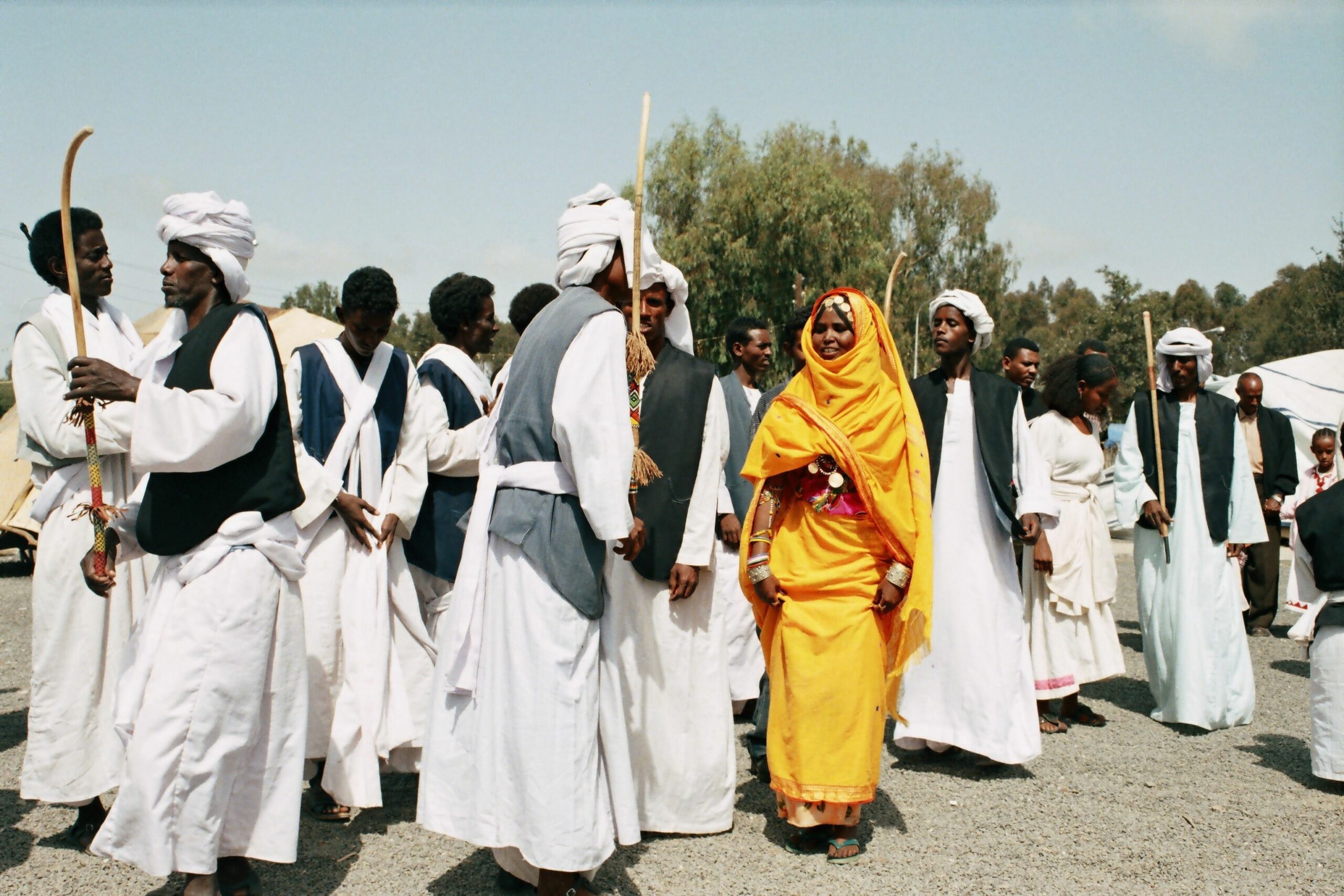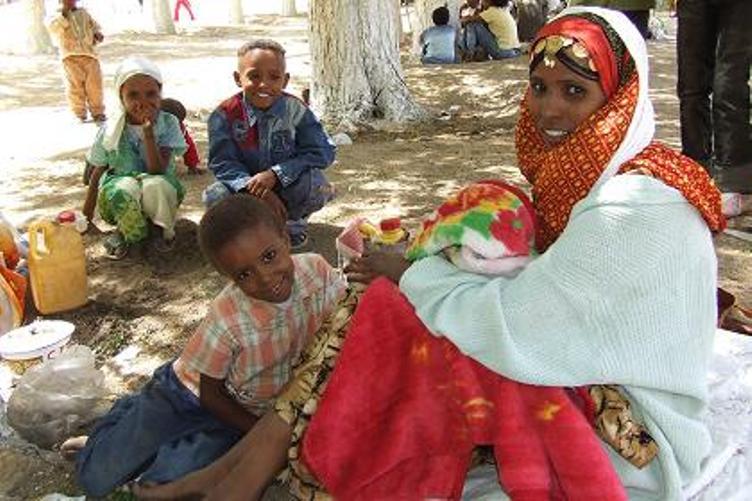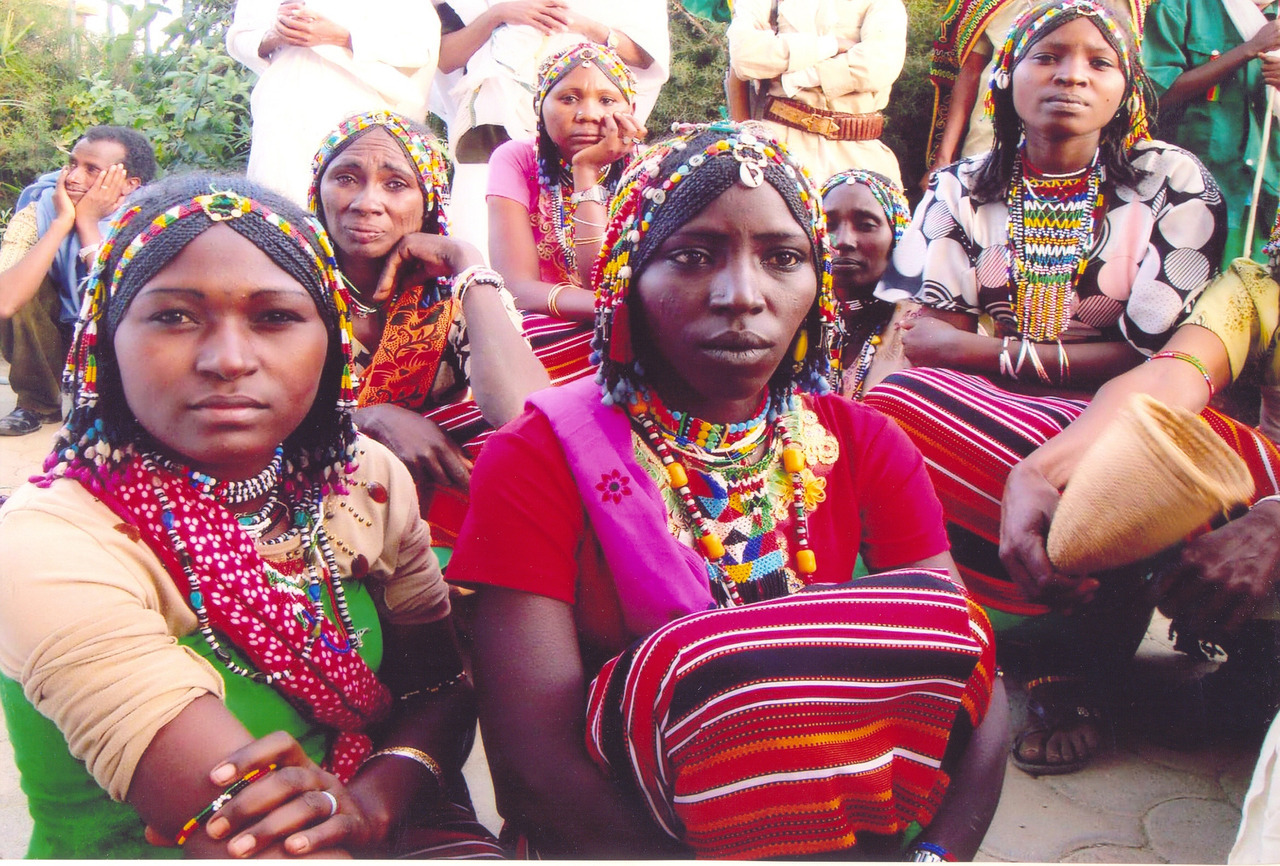Eritrea is a small country located in the Horn of Africa, known for its diverse cultural heritage and unique history. The country is home to nine officially recognized ethnic groups, each with their own distinct traditions and customs. In this blog post, we will explore some of the most commonly asked questions about Eritrean ethnicity, including whether Eritreans are Arab or Italian, what their ancestry is, and what language they speak. So, let’s dive in and discover the fascinating world of Eritrean culture together.

Understanding the Ethnicity of Eritreans
Eritrea is a land of diverse ethnic groups, with nine officially recognized groups by the government. These include the Afar, Blien, Hidareb, Kunama, Nara, Rashaida, Saho, Tigre, and Tigrinya. Each ethnic group has its unique culture and traditions, yet they all coexist in harmony. In an Eritrean context, the Indigenous Peoples are primarily based on the claim of indigeneity made by some Eritrean ethnic groups such as the Afar, Kunama, Saho, and Nara. These groups are recognized as indigenous, and their rights to land and resources are protected under the Eritrean constitution. However, it’s worth noting that the concept of indigeneity in Eritrea is a complex issue and has been a topic of debate among scholars and policymakers. Nonetheless, the diversity of ethnic groups in Eritrea is one of its unique features, making it a fascinating country to explore.
>> Must read What ethnicity is Rios?
Eritrea: Debunking the Misconception of Arab Identity.
Eritrea, a country located in the Horn of Africa, is not an Arab country despite having observer status in the Arab League. Eritrea is a member of the African Union and the Common Market for Eastern and Southern Africa (COMESA), which are organizations that promote economic and political cooperation among African countries. Eritrea’s observer status in the Arab League is primarily due to its historical and cultural ties with some Arab countries, as well as its location on the Red Sea, which has made it an important trading hub for centuries.
It is important to note that Eritrea’s cultural and ethnic makeup is diverse and includes nine recognized ethnic groups. The majority of the population is made up of Tigrinya and Tigre ethnic groups, who speak the Tigrinya and Tigre languages respectively. However, there are also significant populations of other ethnic groups such as the Saho, Bilen, and Afar, who have their own distinct languages and cultures.
Despite its diverse population, Eritrea has faced challenges in promoting unity among its various ethnic groups. In the past, there have been conflicts between different ethnic groups, and the government has been accused of favoring some ethnic groups over others. However, in recent years, there have been efforts to promote national unity and reconciliation, including the establishment of a national commission for unity and reconciliation.
In conclusion, while Eritrea has observer status in the Arab League, it is not an Arab country. Its cultural and ethnic makeup is diverse, and it is important to recognize and appreciate the unique contributions of each ethnic group to Eritrean society.
Trending now – What ethnicity is Asa?
Italian Connection: Exploring the Relationship between Eritrea and Italy.
Italian Eritreans are individuals who were born in Eritrea and are descendants of Italian settlers or long-term Italian residents in Eritrea. During the period from 1882 to 1941, Eritrea was an Italian colony. As a result of this, there is a significant population of Italian Eritreans who still reside in the country. According to the data collected in 2008, there were approximately 800 Italian Eritreans, which constitutes only 0.02% of the entire population of Eritrea at that time, which was around 4.5 million.
It is important to note that the majority of the Italian Eritreans are now elderly, and their numbers have been in decline over the years. This is due to many factors, including emigration to Italy and other countries, as well as a decrease in the birth rate in this community. Despite this, the Italian Eritreans have had a significant impact on the culture and history of Eritrea, and their legacy can still be seen in the architecture, cuisine, and language of the country.
However, it is important to make a distinction between Italian Eritreans and Eritreans of Italian descent. The former refers specifically to individuals who were born in Eritrea and have Italian ancestry, while the latter refers to individuals who are descendants of Italian immigrants who settled in Eritrea before its independence. It is also worth noting that the Italian Eritreans are a small minority in Eritrea, and the dominant ethnic groups in the country are the Tigrinya, Tigre, and Saho.

Exploring the Roots of Eritrean Heritage: An Overview of Eritrean Ancestry.
Eritrean ancestry is diverse and complex, reflecting the country’s unique history and geography. The Eritrean population comprises several ethnic groups, including Tigrinya, Tigre, Saho, Afar, Bilen, and Kunama. Each of these groups has its distinct language, culture, and history.
The Tigrinya people are the largest ethnic group in Eritrea, comprising around 50% of the population. They are also the dominant group in the country’s highlands and the official language of the country. The Tigre people, on the other hand, are the second-largest ethnic group and primarily reside in the country’s lowland areas.
Eritrea’s location at the crossroads of Africa, the Middle East, and Asia has influenced its ancestry. The country’s historical ties with Ethiopia, Yemen, and Italy have also contributed to its diverse ancestry. The Italian colonization of Eritrea in the late 19th century and the first half of the 20th century led to the introduction of Italian culture and language, which still has a significant influence on Eritrea today.
The Eritrean diaspora is also diverse, with Eritreans residing in various parts of the world, including the United States, Canada, Europe, and the Middle East. Despite living in different parts of the world, Eritreans have maintained their cultural identity and traditions, passing them down to future generations.
In conclusion, Eritrean ancestry is a complex combination of various ethnic groups, languages, cultures, and historical influences. Despite these differences, Eritreans share a common identity and pride in their heritage.
Discovering the Primary Language Spoken in Eritrea
Tigrinya is the most widely spoken language in Eritrea and is one of the nine recognized languages in the country. It is spoken by approximately 7 million people worldwide, with the majority of speakers residing in Eritrea and the northern parts of Ethiopia. The language is also known as “Tigray” and belongs to the Semitic branch of the Afroasiatic language family. Tigrinya is written using the Ge’ez script, an ancient writing system that is still used in Ethiopia and Eritrea.
In Eritrea, Tigrinya is not the only language used in official capacities. Arabic is also a working language in offices throughout the country. In addition to Tigrinya and Arabic, other recognized languages in Eritrea include Tigre, Saho, Bilen, Afar, and Kunama.
Tigrinya is a complex and rich language, with a unique grammatical structure and vocabulary. It has borrowed words from various languages over the years, including Arabic, Amharic, Italian, and English. Despite being a challenging language to learn, it is an essential part of Eritrean culture and history.
The Ethnicity of Tigrinya People: Exploring their Cultural Background.
Tigrinya is the language spoken by the Tigrayans, an ethnic group who originate from the Tigray Region in northern Ethiopia. They are a Semitic-speaking people and their language belongs to the Ethiopian Semitic branch of the Afroasiatic language family. The Tigrinya language is also spoken in Eritrea, which shares a border with Ethiopia. The Tigrayans have a rich cultural heritage and their language has been used in literature, music, and other forms of artistic expression. The Tigrayans are known for their resilience and their ability to withstand difficult times. They have a long and proud history, and their culture is deeply rooted in their language and traditions. Despite facing many challenges over the years, the Tigrayans have remained a strong and vibrant community, and their language and culture continue to thrive.
Clarifying the Ethnic and Linguistic Identity of Eritreans: Are they Arabic?
Are Eritreans Arabic?
When it comes to the question of whether Eritreans are Arabic, the answer is a simple no, except for the Rashaida. The Rashaida are a minority ethnic group in Eritrea and are known to have Arabic origins. However, it is important to note that Arabic is a language that has a strong presence in many Eritrean homes. While it may not be a mother tongue, it is still widely spoken across the country.
A cursory look at many Eritrean Muslim families illustrates that next to their mother tongue, many speak Arabic. This is because Islam is the dominant religion in Eritrea, and Arabic is the language of the Quran. Many Muslims in Eritrea learn Arabic as a second language to read and understand the Quran.
It is also worth noting that the Eritrean population is diverse, with nine recognized ethnic groups. The majority of Eritreans are Tigrinya speakers, and Arabic is not a part of the Tigrinya language. However, Arabic has had an influence on the Tigrinya language, with some Arabic loanwords present in the language.
In conclusion, Eritreans are not Arabic, but Arabic is still a widely spoken language in the country, mainly among the Muslim population. It is important to recognize the diversity of the Eritrean population and the cultural influences that have shaped the country’s history and language.
The Official Language of Eritrea: What Do Eritreans Speak?
Tigrinya is the most widely spoken language in Eritrea, with approximately 7 million speakers worldwide. It is also spoken in the northern part of Ethiopia. Tigrinya holds official language status in Eritrea and is widely used in offices alongside Arabic. Interestingly, Tigrinya is written using its own unique script, which is based on the ancient Ge’ez script. This script has been in use in the region for over 2,000 years and is still used today for religious purposes. Tigrinya is a Semitic language and has many similarities to other Semitic languages, such as Arabic and Hebrew. It is a complex language with many dialects and variations, which can vary greatly from region to region. Despite this, it remains a unifying language for Eritreans both at home and abroad, helping to preserve the country’s rich cultural heritage.
Eritrean Diaspora in America: Overview of Popular Settlement Locations
Eritrean immigrants have settled in various parts of the United States, with a significant concentration in Washington D.C., Arizona, and California, particularly in the San Francisco Bay Area. The Eritrean community has also made its mark in other metropolitan areas such as Seattle, Columbus, Minneapolis, Chicago, New York, Atlanta, Houston, Denver, and Dallas. Their presence is notable, and their contributions to the local culture and economy are significant.
In the San Francisco Bay Area, Eritrean restaurants and cafes have become increasingly popular, offering a taste of Eritrean culture and cuisine to locals and tourists alike. The community’s entrepreneurial spirit has also led to the establishment of numerous small businesses, including grocery stores, clothing boutiques, and beauty salons.
Eritrean immigrants have also formed vibrant communities in other parts of the country, where they have established cultural centers and associations to promote Eritrean culture and values. These communities have become a source of support for Eritrean immigrants, providing a sense of belonging and connection to their roots.
Overall, the Eritrean community in America is diverse, dynamic, and growing. With their unique culture and traditions, they are making a significant contribution to the multicultural fabric of the United States.
The Connection Between Eritrean and Ethiopian People
Eritrean people are often mistaken for Ethiopians due to the close proximity of both countries and the similar ethnic groups that make up their respective populations. However, it is important to note that Eritreans and Ethiopians are distinct groups with their own unique cultures and histories. While there may be some overlap in terms of ethnic groups, it is important to recognize that Eritreans have their own distinct identity and are not simply a subset of Ethiopian culture.
It is interesting to note that Eritrea is home to nine officially recognized ethnic groups, each with their own distinct traditions and customs. These groups include the Tigrinya, Tigre, Saho, Bilen, Afar, Nara, Rashaida, Blin, and Kunama. While some of these groups may have ties to ethnic groups in other parts of the Horn of Africa, they are all unique to Eritrea and contribute to the diverse cultural landscape of the country.
In conclusion, while there may be some similarities between Eritrean and Ethiopian ethnic groups, it is important to recognize the distinct identities of both groups. Eritrea is home to a diverse range of ethnic groups, each with their own unique traditions and customs, and it is important to celebrate and appreciate this diversity.
: Eritrea is a diverse country with a rich cultural heritage. The Eritrean people are made up of various ethnic groups, each with its unique language and ancestry. Despite some misconceptions about their ethnicity, Eritreans are not Arabs or Italians, and their primary language is Tigrinya. Eritreans have made significant contributions to the United States, with large communities in areas such as California, Texas, and Virginia. Ultimately, Eritreans are a proud and vibrant people with a rich history and culture, and their contributions to society should be celebrated and recognized.



